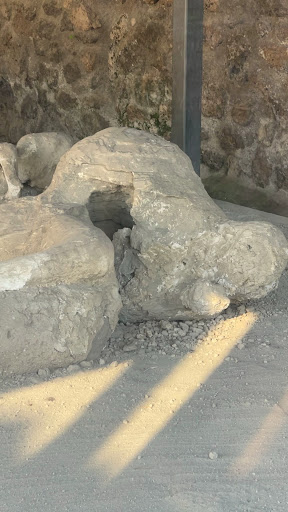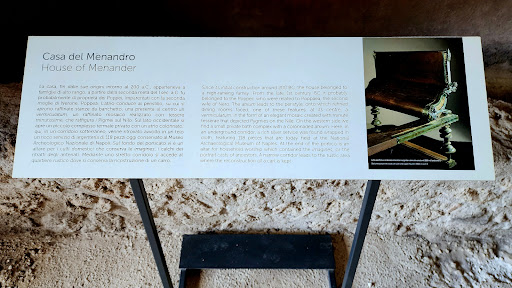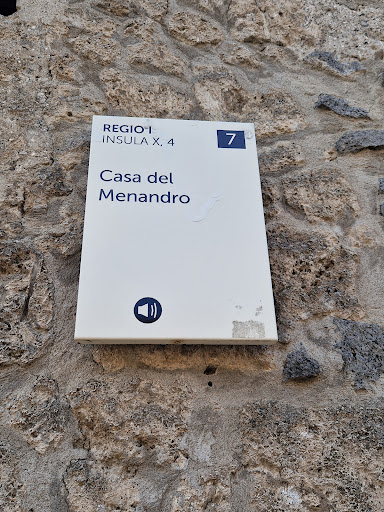This visit is absolutely worth it.
Pompeii stands as a testament to a moment frozen in time, offering visitors an unparalleled glimpse into Roman life at its peak, preserved under layers of volcanic ash and pumice from the eruption of Mount Vesuvius in 79 AD. The preservation of this ancient city is not just remarkable; it's almost miraculous, providing a vivid snapshot of daily life, architecture, and art from nearly two millennia ago.
One of the most striking aspects of Pompeii is the preservation of its public spaces, particularly the marble restaurants and cafeterias. These establishments, with their intricate mosaic floors and frescoed walls, still hold an air of sophistication and elegance. The counters, often made of marble and adorned with geometric designs or scenes from mythology, are still remarkably intact. The colors in the frescoes, from deep reds to vibrant greens, have survived with surprising clarity, illustrating the daily menu or the ambiance of dining in ancient Rome. It's astonishing to see these spaces where Romans once gathered for meals, now standing as silent witnesses to history.
The overall preservation of Pompeii is nothing short of extraordinary. Walking through the city, you're enveloped by the architectural details - from the grand amphitheater to the intimate private homes, each structure tells its own story. The plaster casts of the victims, capturing their final moments in chilling detail, add a layer of somber reality to the visit, bridging the gap between past and present in a way that is both educational and haunting.
The site's layout, with its wide streets, the Forum, and the numerous temples, allows you to traverse through time, imagining the hustle and bustle of Roman life. The bakeries with their mills, the public baths with their intricate hypocaust systems, and the numerous shops all contribute to a vivid reconstruction of urban living. However, this journey through time isn't just about beauty; it's also about confronting the tragedy that befell this city. The juxtaposition of life's vibrancy with the sudden, catastrophic end is a poignant reminder of the impermanence of human endeavors.
The efforts in conserving and restoring Pompeii have been commendable, ensuring that future generations can continue to learn from and appreciate this historical site. The meticulous work on stabilizing structures, protecting frescoes, and managing the site's environmental impact have paid off, making Pompeii not just a tourist destination but a living museum.
Visiting Pompeii is an experience that is both amazing and disturbing. It's amazing for the sheer beauty and the level of preservation that allows us to see with clarity the life of another era. Yet, it's disturbing when you reflect on the suddenness of the disaster that preserved it all. The site is a profound journey through history, where beauty meets tragedy, making it one of the most significant archaeological sites in the world.
Treat yourself to a mesmerising experience that will...
Read moreThe Casa del Menandro, or House of Menander, is a magnificent residence in Pompeii that stands out for its opulent architecture and stunning frescoes. Named after the famed playwright, this well-preserved home features an intricately designed atrium with an impressive peristyle garden, creating a serene atmosphere. The vivid wall paintings, depicting mythological scenes and everyday life, showcase the artistic excellence of the period. As you wander through the various rooms, you can appreciate the spacious layout and the attention to detail that reflects the lifestyle of its affluent inhabitants. A visit to the Casa del Menandro offers an enchanting glimpse into the opulence and cultural richness of ancient Pompeii, making it a highlight of any exploration...
Read moreThis house belonged to one of the wealthiest families in Pompeii. It is named after the portait of the ancient Greek dramatist found on a wall. Frescoes depicting Greek mythology scenes, beautiful floor mosaics of the atrium, lararium shrine with the idols and the mosaic depicting Nile pygmies rowing boats are some of the highlights of this opulent villa. There is also a a grim display of skeletons and porticoed garden, landscaped as part of the garden restoration...
Read more


